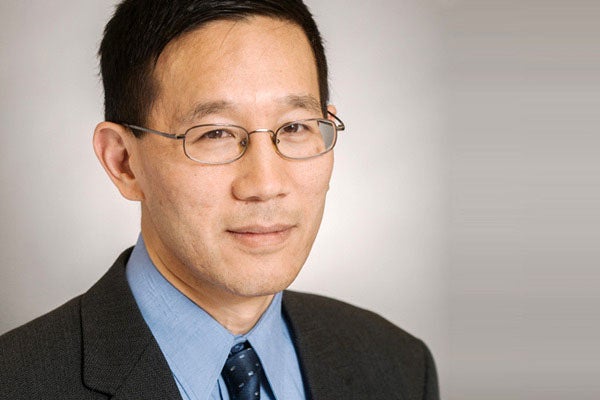
Peeking into the brain: U of T and Tel Aviv University researchers explore the potential of bio-imaging
Published: July 13, 2015
The mechanisms that cause cancer and various brain illnesses are becoming clearer, says Peter Lewis, the University of Toronto’s associate vice-president for research and international relationships.
And it's thanks to research on bio-imaging done by U of T scientists and their colleagues at Tel Aviv University (TAU), Lewis says.
That research was celebrated at a recent bio-imaging conference held jointly by the two universities at Toronto’s Mt. Sinai Hospital and attended by more than 80 scientists and graduate students. “That’s very good for such a specialized conference,” says Lewis.
Just as important as the presentation of papers, Lewis says, was an invitation for researchers and students at the two universities to establish new research collaborations.
“We are encouraging our researchers to formulate projects which build on the strengths of both teams."
Christopher Yip, director of U of T’s Institute of Biomaterials and Biomedical Engineering (IBBME), helped organize the conference. He says it provided an opportunity to showcase bio-imaging developments at the two universities.
“There are a lot of partnerships under development with Israel,” he says. “CIHR [the Canadian Institute for Health Research] had a call for applications in the area of neuroscience and specifically Canada-Israel collaborative network team grants and there was actually a competition which had applications open until a week and a half after the meeting was held here. It was focussed in the area of neuroscience so this meeting was quite timely in terms of bringing teams together with the potential to apply for these sorts of large team initiatives.”
 Both TAU and U of T have considerable expertise in bio-imaging, Yip says. “From U of T’s side, we had a range of investigators from new people like Josh Milstein (physics, University of Toronto Mississauga – pictured at right) who’s developing super-resolution imaging tools for looking at single molecules in cells to Ofer Levi (IBBME) who’s developing implantable imaging systems for looking at the brain in real-time, to Bojana Stefanovic (medical biophysics), whose work focused on cerebral micro-circulation, looking at blood flow in the brain.”
Both TAU and U of T have considerable expertise in bio-imaging, Yip says. “From U of T’s side, we had a range of investigators from new people like Josh Milstein (physics, University of Toronto Mississauga – pictured at right) who’s developing super-resolution imaging tools for looking at single molecules in cells to Ofer Levi (IBBME) who’s developing implantable imaging systems for looking at the brain in real-time, to Bojana Stefanovic (medical biophysics), whose work focused on cerebral micro-circulation, looking at blood flow in the brain.”
Yip's own area of research is focused on developing instrumentation platforms and high resolution optical imaging of cellular dynamics. “There are some really nice tools that are being developed at Tel Aviv that would provide a good opportunity for my students,” he says.
Yip says he’s hoping some of the IBBME students take advantage of the exchange opportunities that U of T, Tel Aviv University and the governments of Israel and Canada have opened up. IBBME also has funds that can be used to help students go on exchanges to Tel Aviv University, he says.
“We’ll be able to send our biomedical engineering students to work in these labs on formal exchanges not just for a few days or weeks, but for months.”
Besides bio-imaging, U of T and Tel Aviv University have been collaborating in other ways, notes Yoav Henis, TAU’s vice-president, research & development. Henis says the partnership between the two universities “combines strengths of both institutions to form a whole which is bigger than the sum of its parts. We are looking forward to expand it also to other regions of mutual interest.”
TAU President Joseph Klafter has visited U of T twice in recent years and last year, the two universities held a joint biophysics conference in Tel Aviv. More recently, U of T President Meric Gertler signed a Memorandum of Understanding on research collaboration while visiting Israel.
U of T has also developed strong links with other Israeli institutions, in particular Hebrew University and Technion, and is one of the top international partners for many of Israel’s leading universities. For example, U of T ranks third in the world for co-published papers with Hebrew University, fourth for Technion, and fifth for Tel Aviv University.



